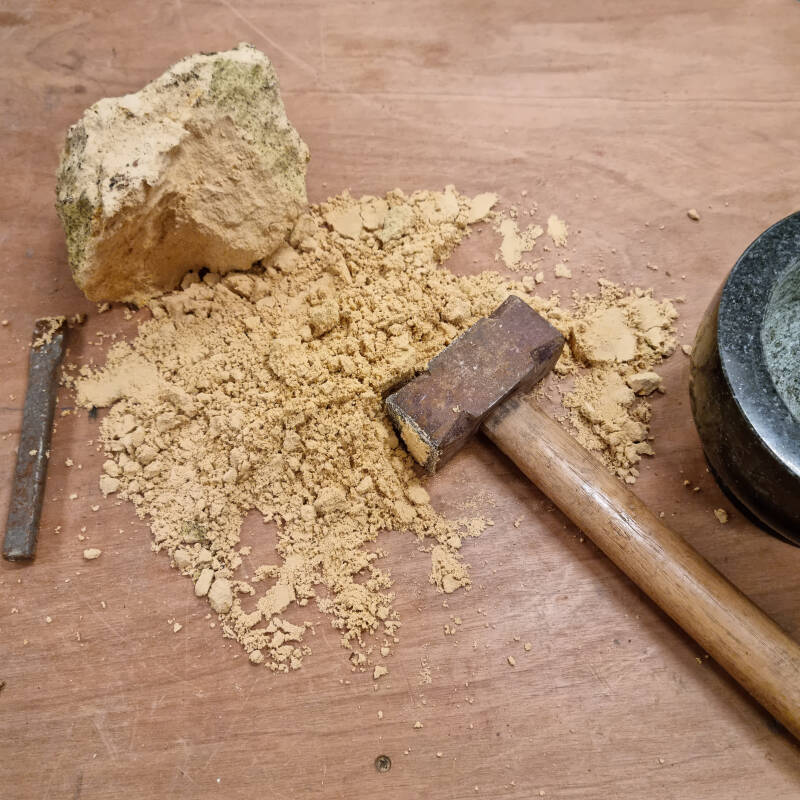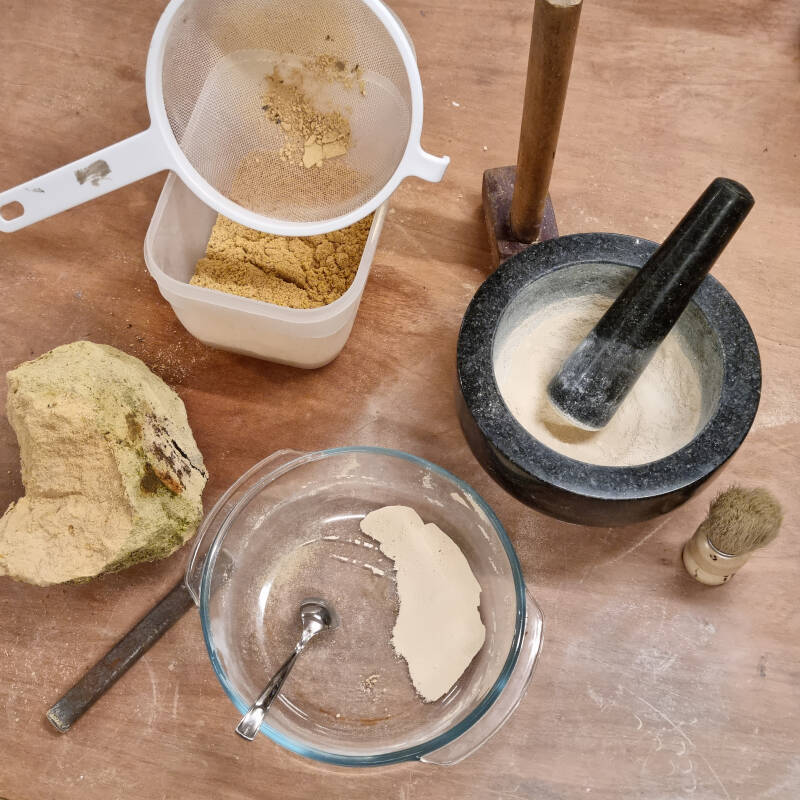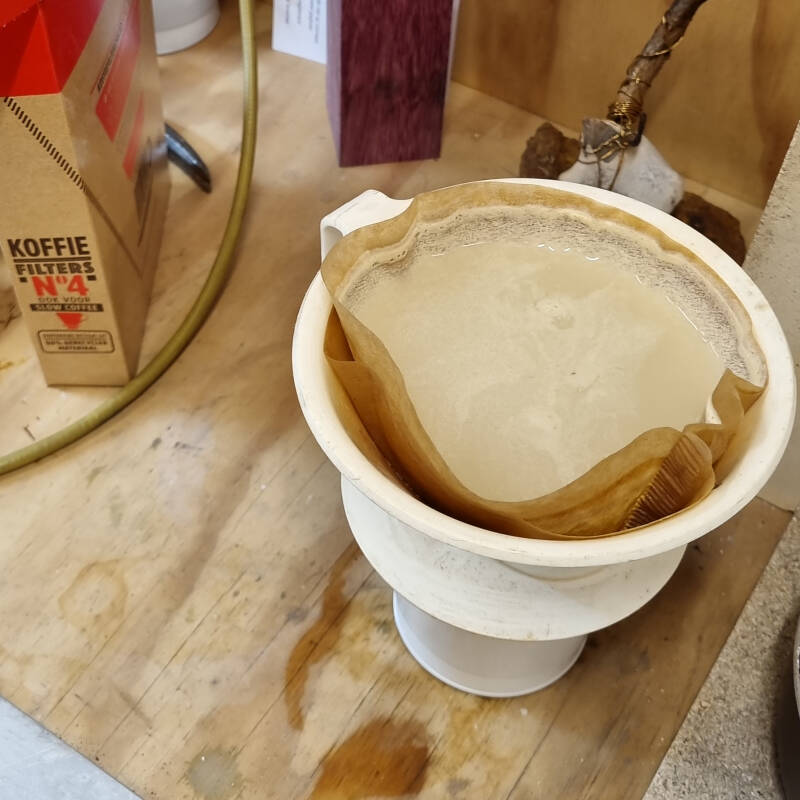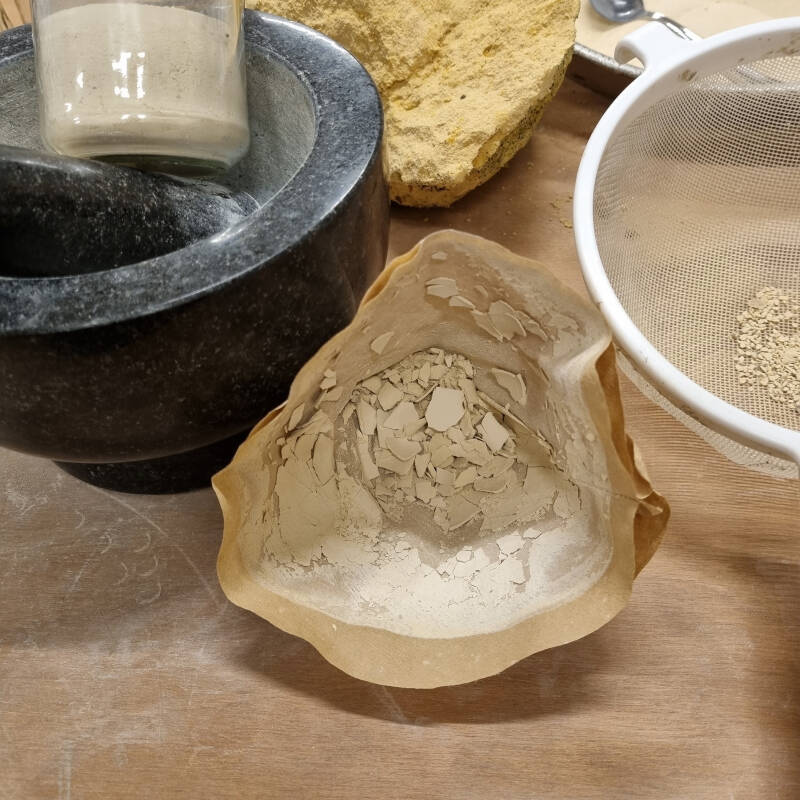Working marl in a different way.
How to turn stone into pigment?
Therefore I took a workshop with Dorieke Schreurs of Studio D'O. She knows a lot about creating inorganic pigments. These pigments she uses in her paintings, but she also passes on her knowledge by giving workshops and as a freelance teacher. You can also buy ready pigments from her if you prefer. In her research, Dorieke looks for materials and possibilities to realise sustainable development in art-making. In my search for sustainable materials, I came across her work.
When I work with stone, dust and grit are left. I have always thought it a shame to throw it away, but I had no clue what to do with it. Now I can turn what was waste into new material. The pigment is the basis of paint. The binder you add will define whether it turns into tempera, oil paint or another paint. The pictures show how a piece of marl from a container turns to pigment. The block of marl smashed to form grit. In a mortar, this grit gets ground into a fine dust. To separate the finest from the coarser particles, you mix it with water. The finest particles remain suspended in the water while the rest sink to the bottom. By using a coffee filter, the cloudy water with the finest particles separates in clear water and pigment. The pigment is left to dry in the coffee filter. The dry lumps of pigment are ground once more in the mortar. The particles that sunk to the bottom in the water can be ground again in the mortar. Finally, the complete piece of marl can turn into pigment. It's a matter of patience and effort.




